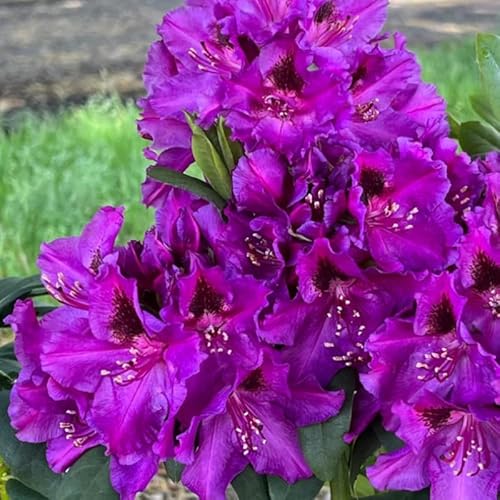Most gardeners may have heard the term “deadheading” when talking about flowers, but what is deadheading?
Plant deadheading, also known as “grooming a plant” and “pinching flowers,” is a term used for the process of removing faded or spent flowers to keep the plant tidy and to encourage new blooms.
Deadheading flowers is a task that takes some time, but it has lots of benefits for the plants involved.
Please keep reading to discover more about plant deadheading and find out why it is beneficial to your plants. You will also learn when and how to deadhead plants, and get a free printable deadheading flowers list.
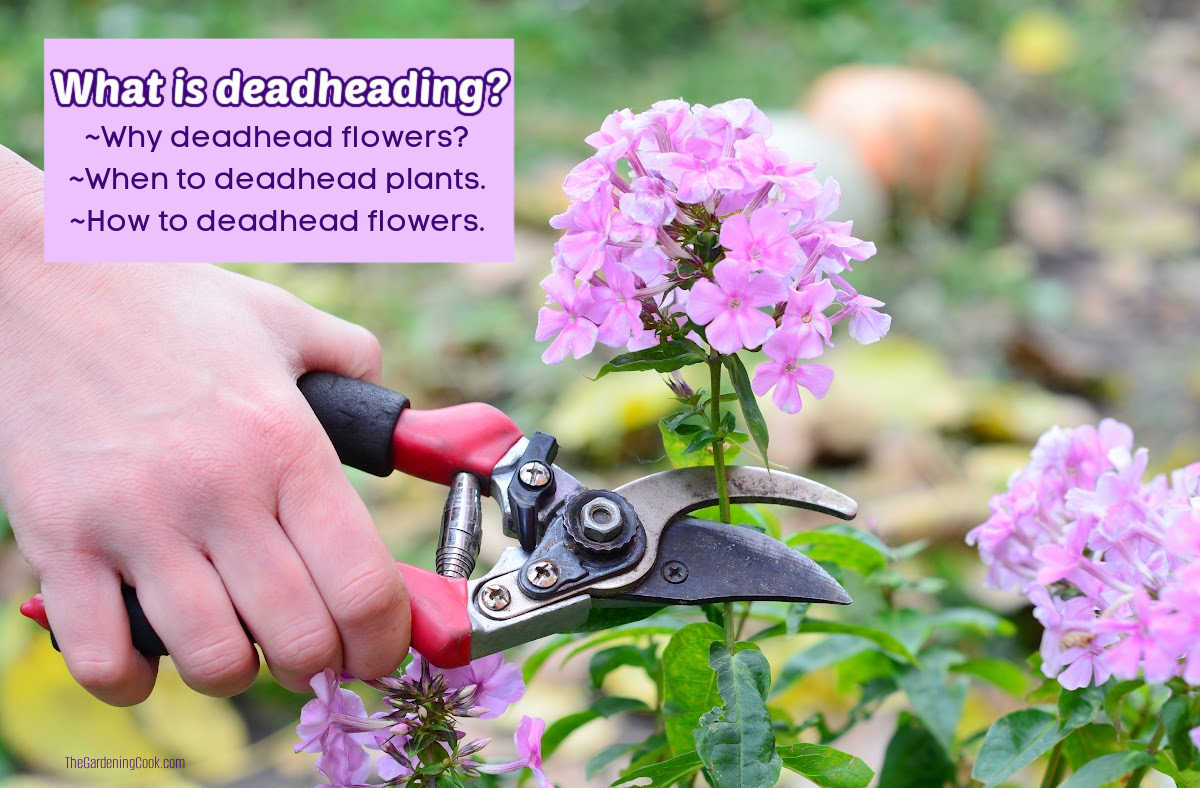
Some of the links below are affiliate links. I earn a small commission, at no extra cost to you if you purchase through an affiliate link.
Why is deadheading flowers important?
Deadheading is a way to keep your garden looking tidy. By removing dead and faded flowers, the plant looks nicer.
Many peonies, roses, and camellias have numerous petals on their flowers. If they are left on the plant and not removed, they will break apart, scattering into the garden and making a mess.
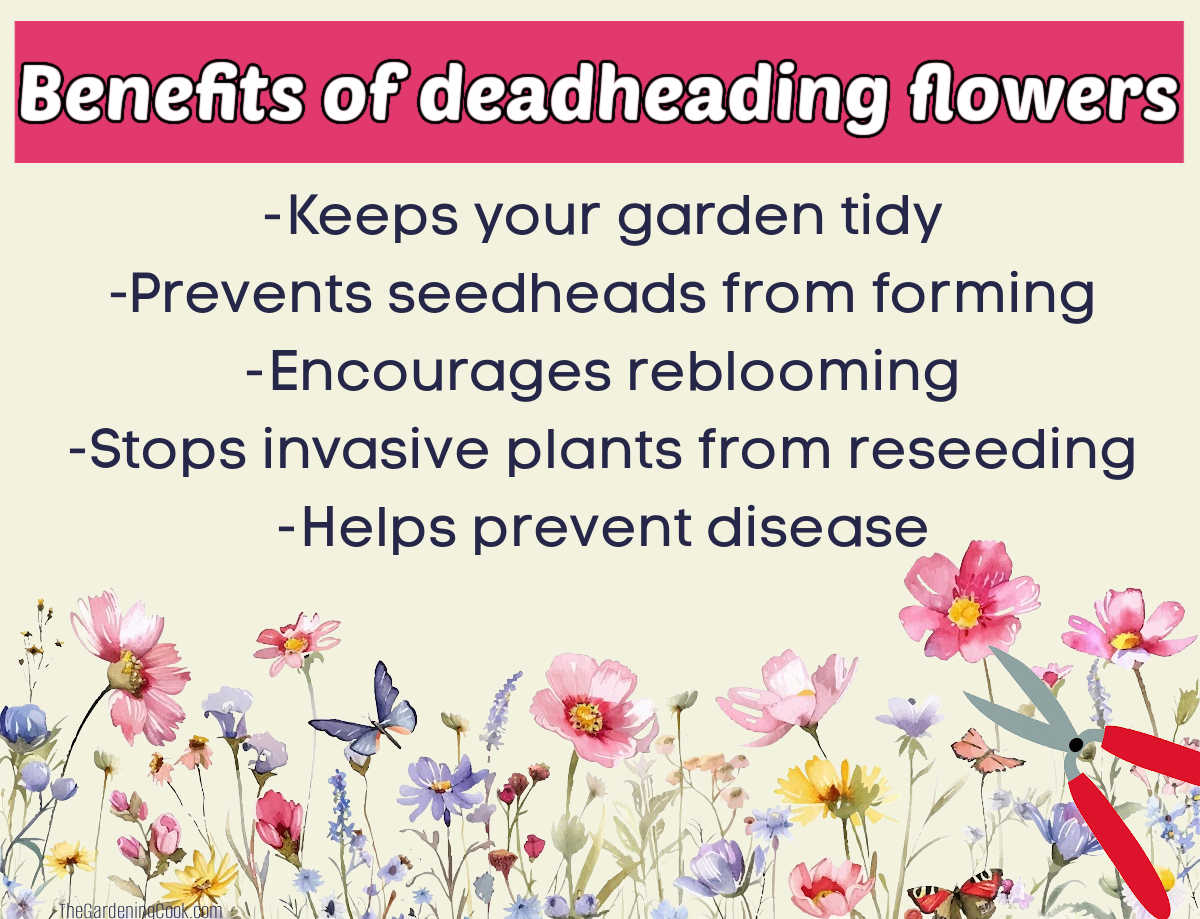
However, plant deadheading is not just done for aesthetic reasons.
As the flowers fade away, they begin to form seedheads. Removing dead flowers directs the plant’s energy into producing more flowers, rather than unwanted seed pods.
Deadheading also prevents a plant from self-seeding. Larkspur, common valerian, morning glory, and black eyed Susans can quickly become a nuisance if not deadheaded, because of their invasive nature.
Many reblooming plants will completely stop flowering if the spent flowers are not removed. Roses are a good example of a plant that needs deadheading so that the plant can continue flowering.
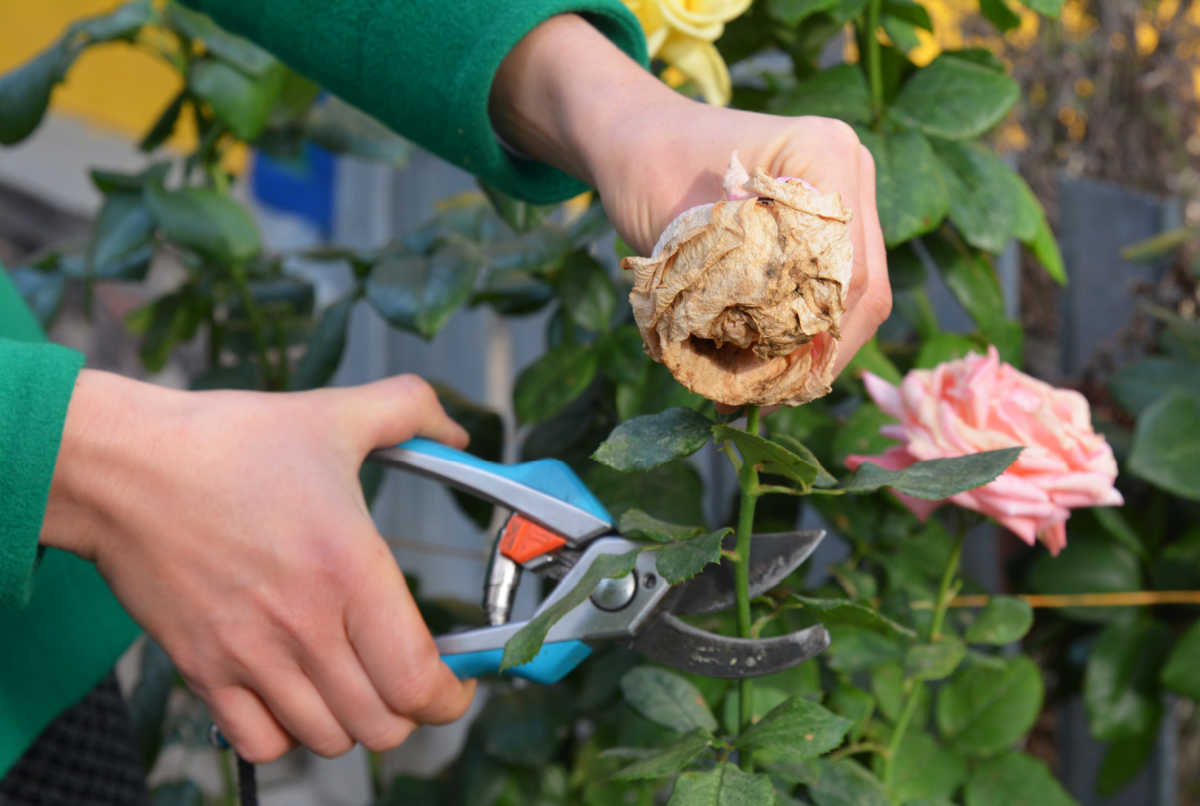
Another benefit of deadheading is that it helps prevent disease. Decomposing plant matter, whether it is on the ground or on the plant in the form of dead flowers, is a great breeding ground for bacterial and fungal diseases.
Removing dead flowers before they start to decompose can go a long way towards keeping your plant healthy.
Most annuals and many perennials will continue flowering all season long if you remember to get rid of their faded flowers. Deadheading makes for a better-looking plant and a longer flowering season.
When to deadhead flowers
The best time to deadhead a flower is when you notice that the plant is starting to look untidy because of the dead flowers. Start deadheading plants early, in late spring, when you first start seeing faded blooms.
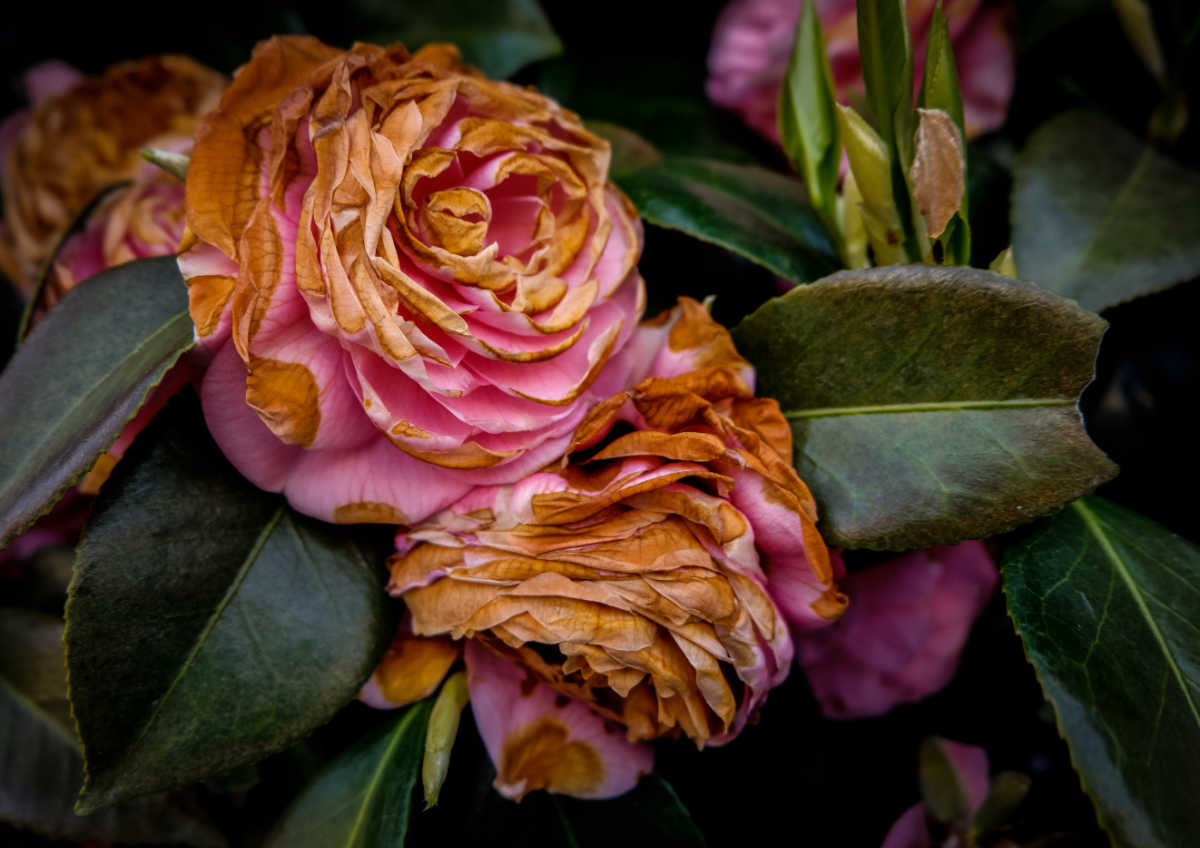
Continue the practice often, as a part of your daily garden maintenance routine.
If you take a few minutes to pinch away dead flowers, you’ll ensure that your garden thrives and produces even more beautiful blooms.
How often you need to deadhead depends on how long the blooms of your plants last. Some flowers last a single day, and other plants blooms last for weeks.
The weather can also affect how long flowers last. After torrential rains, you may find that you have to deadhead plants more than normal.
As you get closer to fall, back off on plant deadheading. This is the time when you may want to consider letting plants go to seed. Doing so will attract birds to your garden during the winter months.
How to deadhead flowers
Look for flowers that are faded, wilting, or already dead. If the stem is soft and easy to break, you can use your fingers to pinch off the bloom where it attaches to the stem.
Daylilies are known for their ease of deadheading, since their blooms are soft and come away easily when pinched.
For plants that have tougher stems, such as roses, use clean, sharp pruning shears. Follow the stem below the spent flower to just above the first set of healthy leaves. Cut here with the shears; that’s all there is to deadheading!
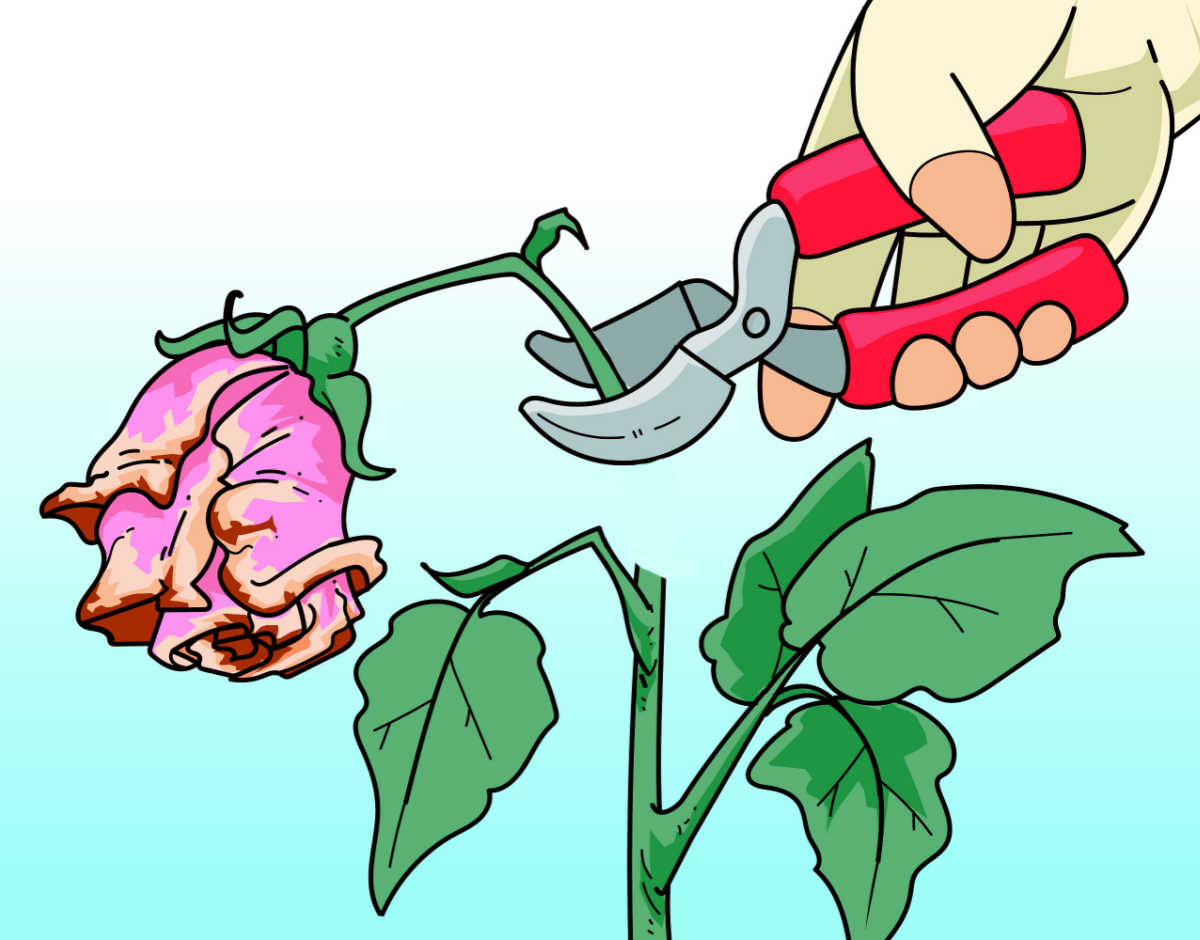
Repeat this process with any spent blooms that you find. Throw the deadheaded flowers on your compost pile or dispose of them in your garden trash bin.
Do all plants need to be deadheaded?
No, many flowers don’t need to be deadheaded. Some plants have self-cleaning flowers, which drop their petals to the ground without the need for deadheading.
There are some plants, such as sedums, whose dried flowers are decorative and ornamental. You can leave the spent blooms on these plants to add interest to the garden long after they have finished blooming.
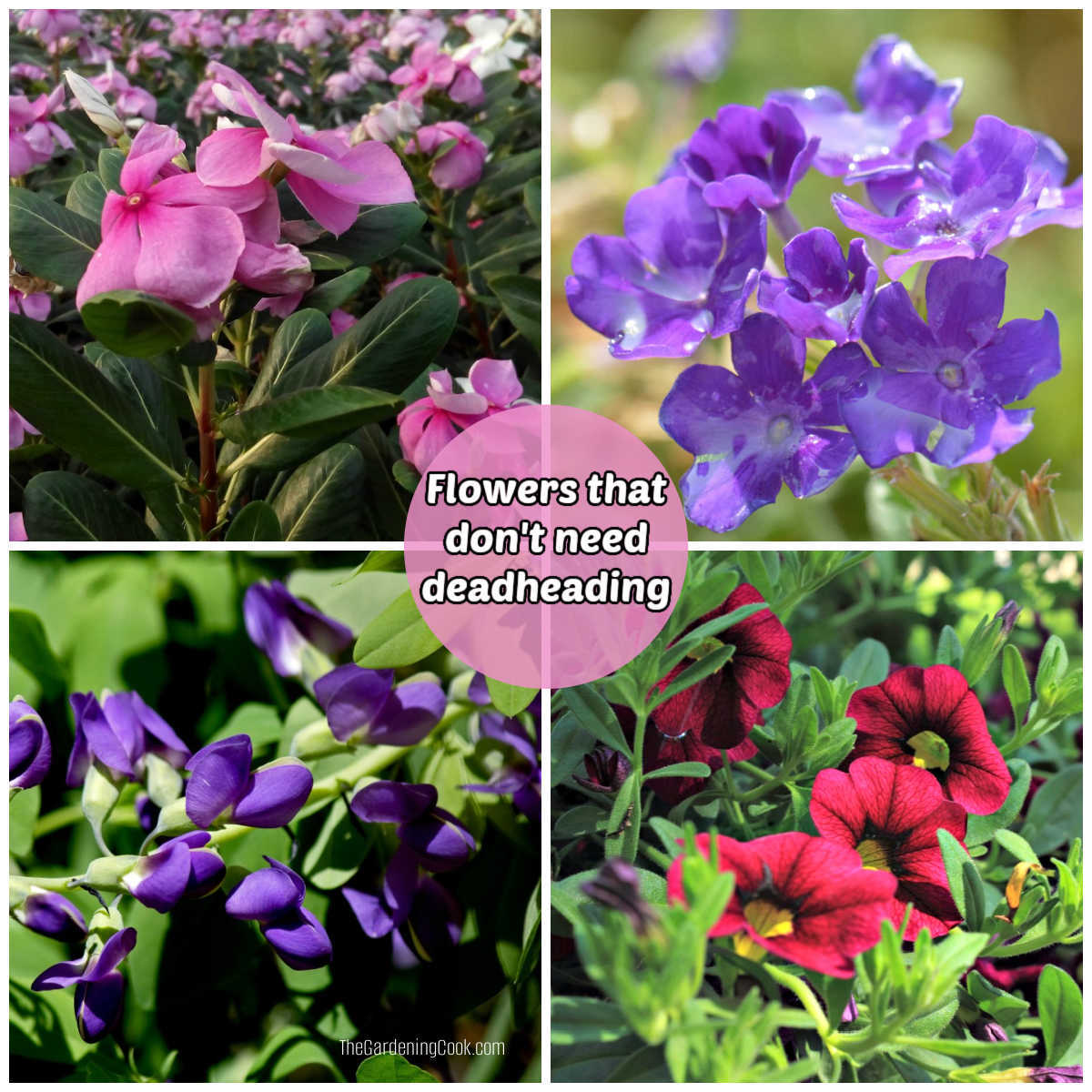
Other plants bloom very late in the season, so there is no need to deadhead them, particularly if you plan to leave the seedheads for winter interest.
You should avoid deadheading biennials, such as foxgloves. They produce foliage in the first year and bloom in the second year.
Biennials complete their life cycle in two years. If you avoid deadheading their blooms after they bloom, biennials will go to seed, and you can keep the cycle of new plants going the following year.
Deadheading flowers list – 40+ flowers to deadhead
Plants that benefit from deadheading include most annuals and many perennials. The deadheading flowers list below is a great garden resource that will remind you which plants need to be deadheaded.
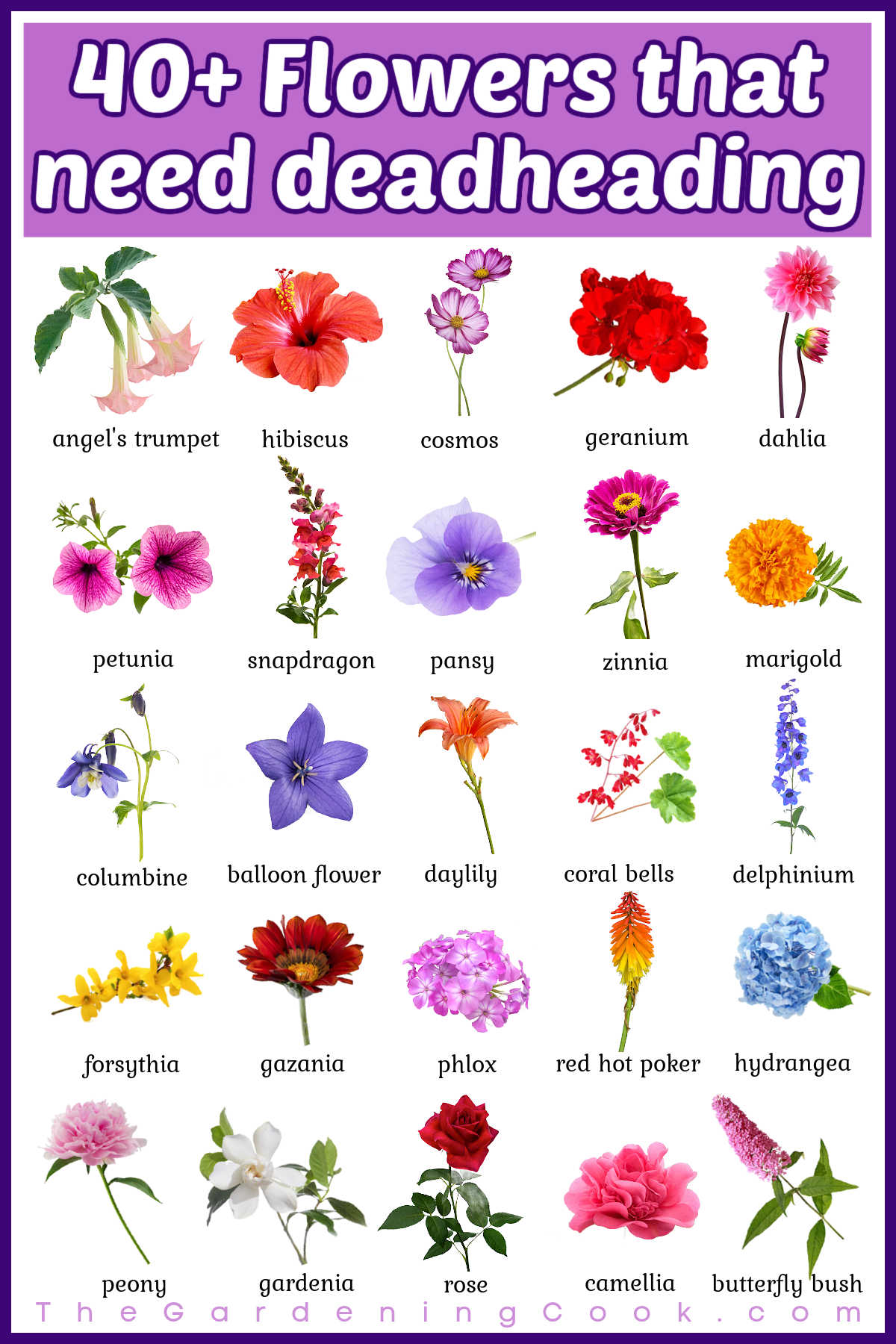
You can download the deadheading flowers list here in a high-resolution format. Alternatively, you can print the list out from the project card at the bottom of this post in a slightly smaller size.
The photo above shows a few popular plants that should be deadheaded. There are many others!
Here is a list of 40+ popular plants that benefit from deadheading.
Annuals and tender perennials that need to be deadheaded
- Angel’s trumpet
- Cosmos
- Dahlia
- Geraniums
- Gloriosa lily
- Hibiscus
- Marigolds
- Salvia
- Petunias
- Pansies
- Snapdragons
- Sunflowers
- Sweet William
- Zinnias
Perennials that bloom for longer if they are deadheaded:
- Balloon flower
- Bee balm
- Clematis
- Columbine
- Coral bells
- Coreopsis
- Daylilies
- Delphinium
- Easter lilies
- Forsythia
- Gazania
- Gladiolus
- Hollyhock
- Hydrangea
- Iris
- Lamb’s ear
- Liatris
- Phlox
- Red hot pokers
- Tulips
- Shasta daisy
Shrubs that like to be deadheaded
- Butterfly bush
- Camellia
- Gardenia
- Peony
- Rhododendron
- Rose
- Spirea
- Wisteria
Share this deadheading flowers post on Twitter
Do your friends often ask, “What is deadheading a plant?” Why not share this post with them? Here is a tweet to get you started:
What is deadheading? 🌸 It's the simple trick of removing spent blooms to keep plants looking fresh and helping them bloom for longer! Learn when, why, and how to deadhead flowers on The Gardening Cook. 🌼✂️ #Deadheading #FlowerCare… Share on XPin this deadheading flowers guide
Would you like a reminder of this post that answers the question “What is deadheading flowers?” Just pin this image to one of your gardening boards on Pinterest so that you can easily find it later.
You can also watch our slideshow YouTube video about flowers that need deadheading!
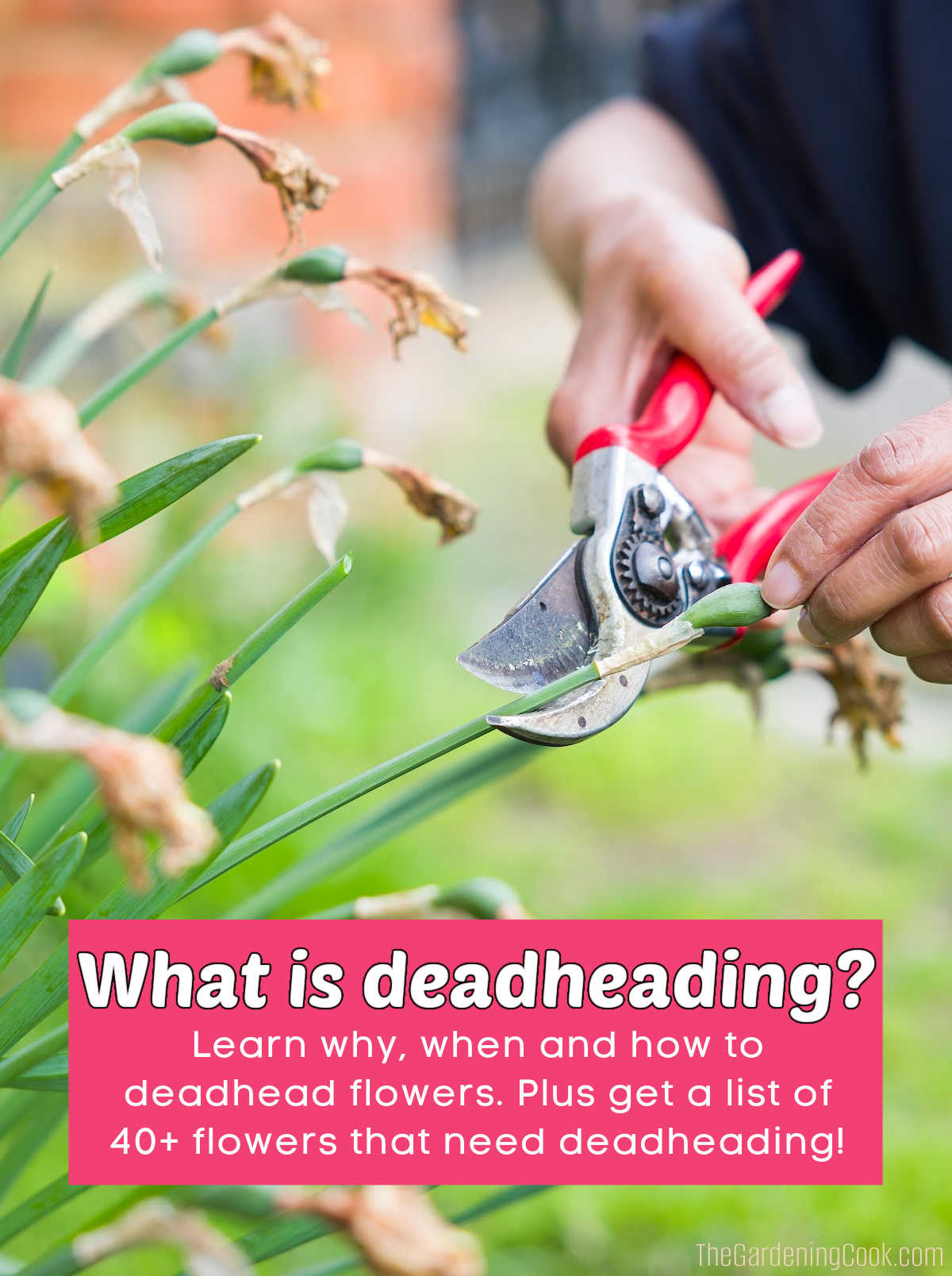
What is Deadheading? Deadheading Flowers List
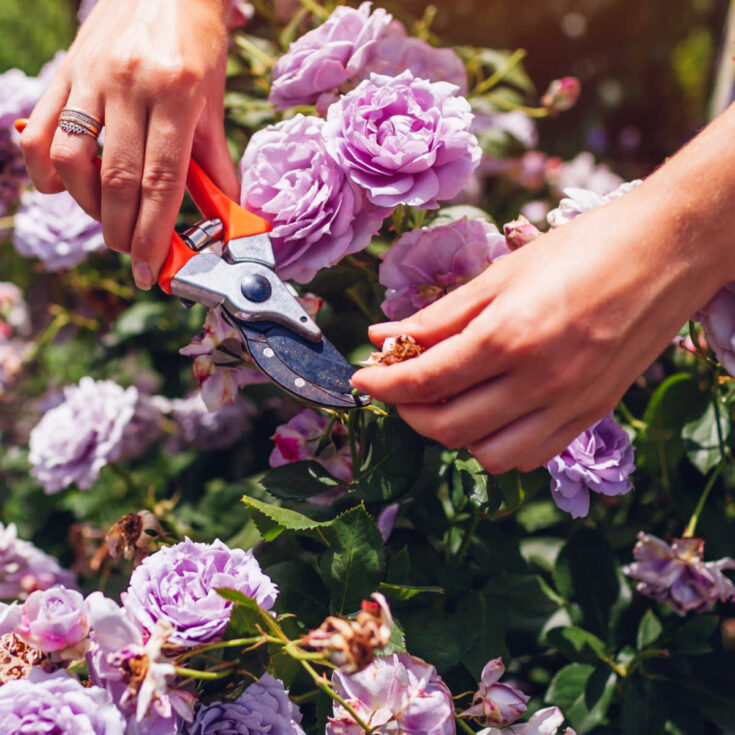
Plant deadheading is the process of removing spent flowers to make your plant look tidier, prevent it from going to seed, and keep it blooming longer.
It is a garden task that takes some time, but is worth it for the way your garden will look.
Print out this deadheading flowers list and take it with you the next time you go plant shopping.
Materials
- Printer paper
Tools
- Computer
- Printer
Instructions
- Load your computer paper into your printer.
- Using the print function on this card will print a list of flowers that need deadheading that fills about 3/4 of an 8.5 x 11-inch sheet of paper.
- Choose portrait layout and, if possible, "fit to page" in your settings. Doing this will fill the entire page.
- Alternatively, you can use this link to print the deadheading flowers list (with photos and names) as a high-resolution image, using the print feature in your browser window.
- After you get this list of plants that need deadheading, you can bring it with you when you go plant shopping.
- Please note: Free printables with plant names and photos take a long time to make. This deadheading plants identification guide is for personal use only. If you are sharing this list (and thank you for that!), please link directly to this post and not to the actual image. We appreciate your help in supporting the site. This free garden printable may not be used for any retail purpose or for mass distribution.
Notes

Recommended Products
As an Amazon Associate and member of other affiliate programs, I earn from qualifying purchases.
